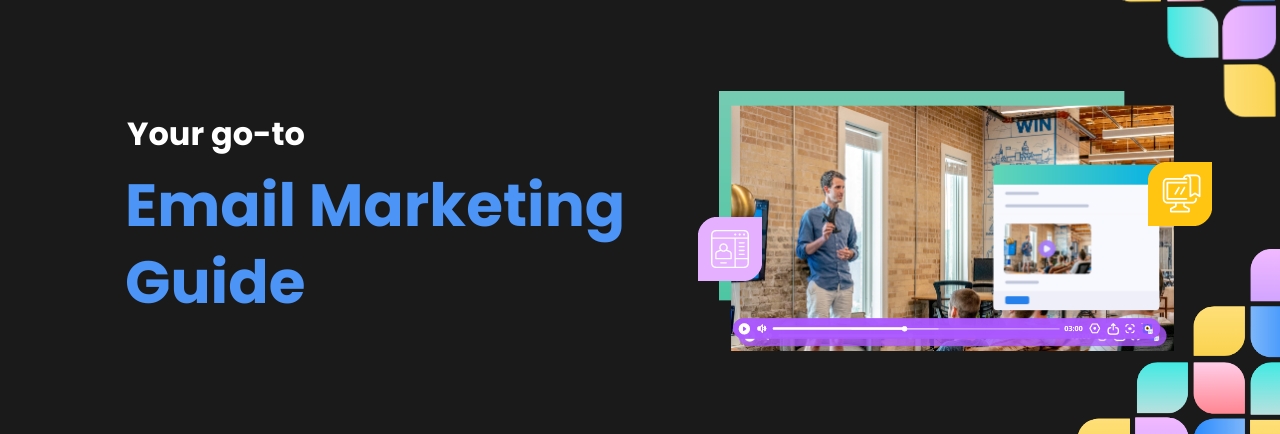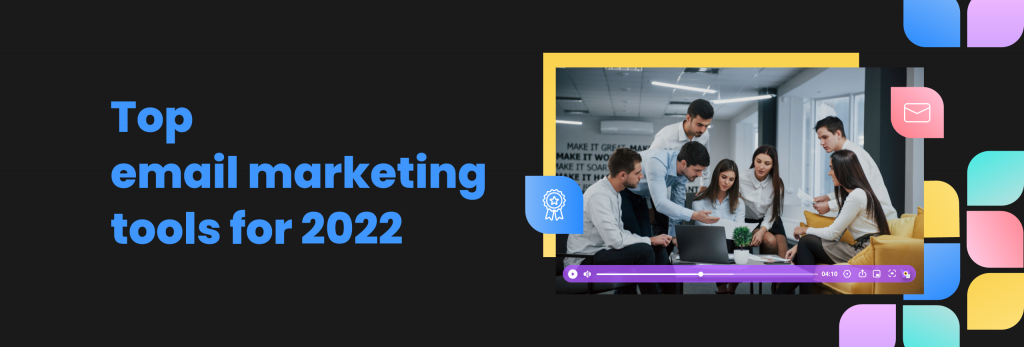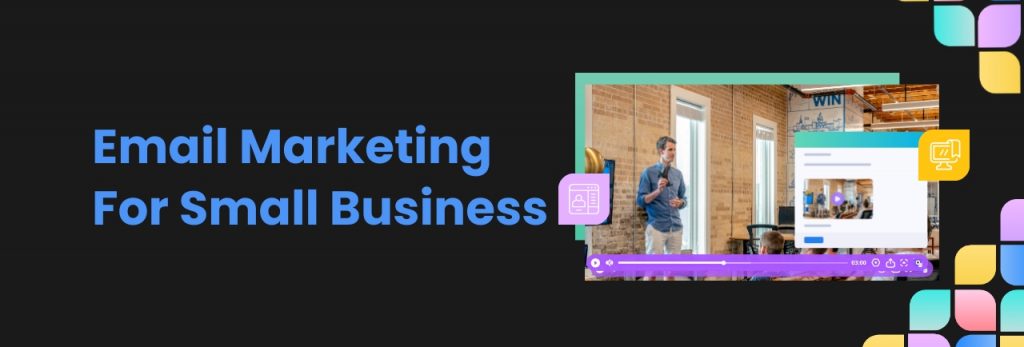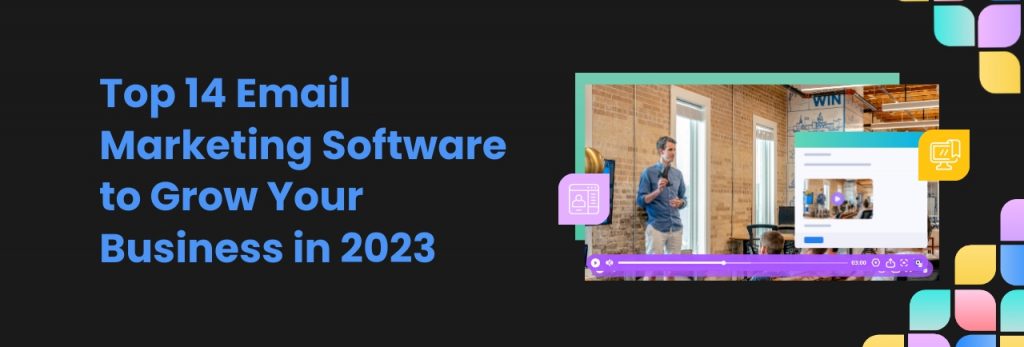Contents
Your go-to email marketing guide
The ability to market to one’s audience is the holy grail that marketers keep looking for. Getting to the right audience is more than half the problem solved since its ROI is $36 on every dollar that you spend. No matter your business objective, defining the right marketing strategy entails using email marketing. It has been more than four decades since the first promotional email was sent, and you can expect them to be relevant in the coming years.
Email marketing’s ROI is significantly higher than all the other marketing channels. The best thing about it is that your audience has given you permission to be a part of your marketing emails. The average email subscriber is worth more than $48, according to Pure360’s Marketer Email Tracker.
How does email marketing work?
By delivering highly valuable information to your audience, you can convert them into paying customers. To get your email campaigns right, there are several things that need to fall in place. In this article, we look at email marketing’s benefits, strategies to build your email list and the best practices for a successful email marketing strategy.
Promoting your products and services, nurturing leads, boosting your brand awareness, and building personal connections through engagement are what email marketing campaigns do with elan. If your business doesn’t invest heavily in email marketing, we are hoping that this article will change it for you.
Benefits of using email marketing:
Email marketing should be your go-to choice when people already know about your brand. In fact, you need to get permission before you send emails to people. Let’s look at the benefits of email marketing.
1. Builds credibility:
By sharing valuable and informative content, you come across as helpful to your audience. Since trust is a big part of doing business, your email marketing can be immensely helpful to build that.
2. Increases sales:
An audience that consistently receives emails from you is more likely to turn into a paid customer. For that to happen, you need to engage with them with valuable content. It is possible to increase your sales with ease by increasing the size of your email subscriber list. Put them into a nurturing plan, and get in touch with those who evince interest.
3. It delivers your message:
What would you choose? A new subscriber to your brand’s YouTube page or a new subscriber to your email list? The answer is simple– a new email subscriber. Apart from the fact that Facebook limits what its audience gets to see from brands, emails are excellent when it comes to getting into the inboxes of your audience. Also, your email subscribers have given you explicit permission to send emails.
4. It drives conversions:
Marketers love nothing more than conversions. It could either be subscribers, lead magnet downloads, webinar signups, sales, and memberships. Turning potential customers into paying customers is the most important metric that a marketer uses to gauge their own potential. You are more likely to convert someone from an email marketing campaign than a follower on Facebook or Twitter. Also, email clicks are easily measurable as it is possible to collect real-time metrics for your email marketing campaigns.
Strategies to build your email list:
The first step to email marketing success is building an email list of subscribers with similar traits to your target audience. Let’s look at what you can do to build an email list.
1. Create lead magnets:
One of the best ways to add subscribers to an email list is by using reciprocity. Why should someone send you their email address? Just for you to market your services? The world runs on quid pro quo. To get your potential customers’ details, you need to offer them something in return– a lead magnet. You provide something of value to your subscribers, like ebooks, free consulting calls, whitepapers, reports, infographics, webinars, or access to a tool.
2. Signup forms:
It is a traditional strategy to gather email subscribers. These static forms are used in pages with a high traffic load. Since they are non-intrusive and simply remind the visitor that they can signup if they want, they don’t mar the user’s experience in your website.
3. Gamification:
Add interactive elements in your lead capture form to build your email list. Scratchcards, quizzes, tests, surveys, wheel of fortune, etc., are interactive strategies that will interest the user. They are likely to engage with it even if they weren’t ready to share their details in the first place. The prizes from gamification are easily attainable; therefore, it appeals more to your visitors.
4. Use loyalty and referral programs:
It can easily help you increase the size of your email list while rewarding loyal customers, thus reducing your customer churn rate. Use these programs to persuade brand new customers and existing customers to upgrade.
5. Giveaways and contests:
Use social media platforms to increase your email list. You can use these networking sites to be more personable and approachable as a brand. Generate user engagement by writing witty posts, being relatable, offering Q&A sessions, free consultations, etc. Come up with contests and giveaways and drive the traffic generated from here to the landing page where people can signup.
Best practices for a successful email marketing strategy:
1. Set email marketing KPIs:
You want to measure the results of your email marketing campaign and use them as a benchmark to compare them. Open rates, deliverability rate, and click-through rate (CTR) are email marketing KPIs that you have to monitor without fail.
2. Define your audience:
You need to have a clear idea of who your audience is. Short answer– not everyone is your target audience. One of the most important tasks of a marketer is to have a clear idea of which demographic they are targeting. Unfortunately, your customers cannot be from a distinct demographic, there are several factors that need to be considered. This is why finding buyer personas become pivotal in a marketing journey. A buyer persona is a fictional representation of your ideal customers. Collect as much information as possible using historical data, existing customer base, competitor’s customer list, and so on.
3. Add personality to your emails:
Hire a copywriting rockstar to write your emails. Every email that you send as a part of your marketing should inject personality into it. The voice, tone, and tenor used in the email copy should represent your brand and what you stand for. You don’t want to bore your customers with insipid writing.
4. Create a schedule:
Since there are several stakeholders, you might want to schedule your emails. It will help everyone stay on track. Create a content calendar for your entire marketing strategy. The frequency with which you send emails should be based on the recipient’s stage in the buying cycle, industry, and email type.
5. Invest in a good design:
Focus on your message while designing email campaigns. Ensure that the main takeaway from the email can be quickly identified. Divide the text into sections for better readability. Ensure everything in your emails is clear and to the point, especially the Call To Action (CTA) button.
6. Don’t buy email lists:
A mistake that many startups end up making is that they buy email lists in bulk. Doing so can completely derail your efforts as most of these are not verified. Your emails might end up in the spam folder too. Also, it is illegal and can invite severe fines.
7. Make it visually appealing:
You want your customers to spend more time on the email savouring every single word. For this to happen, you need to quickly communicate what’s important to your audience by using the right images and colours. Ensure that the images are optimized and that it doesn’t increase the load time. Aesthetics should never be at the cost of an optimized email-viewing experience.
8. Develop your campaign around specific goals:
In email marketing, you can strategize and plan your campaigns to achieve specific goals. The objective could be to generate a specific number of leads, increase purchases, or get more demo leads. Email marketing allows you to target narrowly, thereby increasing the chances of success.
Wrapping up:
Hope you have a clearer idea of email marketing after the end of this article. Before you start your email marketing campaigns, the first step is to build an email list of subscribers– do not forget that. Engage with your subscribers on a personal level to bring them deeper into the sales funnel. Get repeat business by curating and sending highly personalized email content. Send segmented and targeted emails to increase your email marketing’s ROI.




